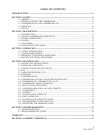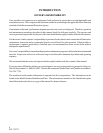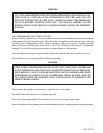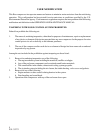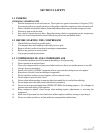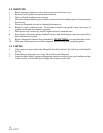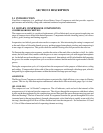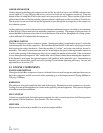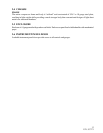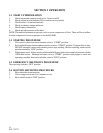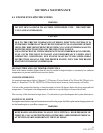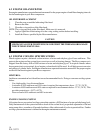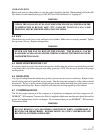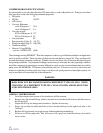11
P/N: 307271
SECTION 2 DESCRIPTION
2.1 INTRODUCTION
Your Boss compressor is a gas/diesel driven Rotary Screw Compressor unit that provides superior
performance and reliability along with a minimal amount of required maintenance.
2.2 ROTARY COMPRESSOR COMPONENTS
COMPRESSOR DESCRIPTION
The compressor assembly is a positive displacement, oil flood lubricated, screw type unit employing one
stage of compression to achieve the desired pressure. Components include a housing (stator), two screws
(rotors), gears, bearings and bearing supports.
In operation, two helical grooved rotors mesh to compress air. Inlet air entering the casing is compressed
as the male lobes roll down the female grooves, pushing trapped atmospheric air along and compressing it
in one stage of compression. This process delivers smooth-flowing air at full pressure to the receiver.
To illustrate the compression sequence, consider the action of the male lobe as similar to a ball. As a helix
rotates, the ball (male lobe) meshes with the groove to start a compression cycle with trapped atmospheric
air. As the ball moves down the groove, air is compressed. Atmospheric air fills in behind the ball preparing
the groove for another compression cycle as rotation continues and the male lobe again meshes with the
groove.
During the compression cycle, oil is injected into the compressor for the purpose of lubrication, cooling
and sealing. Compressed air laden with oil leaves the compressor unit through a discharge port, which is
designed to give optimum performance within the desired discharge pressure range.
AIR FILTER
The Rotary Screw Compressor unit and engine are protected by a high efficiency, two-stage air filtering
system. This is a dry filter that requires maintenance when the air filter restriction gauge says it is time.
OIL COOLING
The compressor is an “oil flooded” compressor. The oil lubricates, seals and cools the internals of the
compressors as it is injected into the compressor. The oil goes through the compressor with the air where
it picks up the heat generated by the compression process then seals the spaces between moving parts and
lubricates bearings. The hot oil must be cooled. It is separated from the air, passed through the oil cooler
(mounted next to the engine radiator), through a thermostatic valve (that helps to rapidly warm cold oil at
start-up), then through a full flow oil filter and then back into the compressor. See instructions 4.10 and
4.13 for oil filter element and air/oil separating element servicing.




